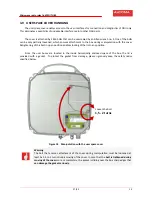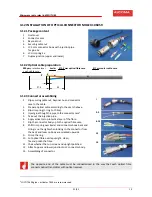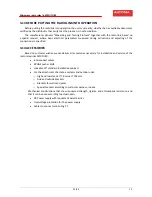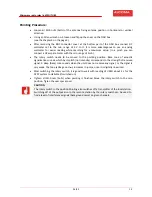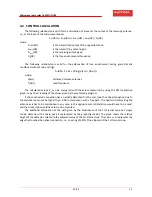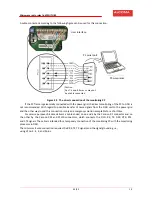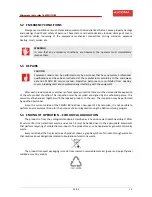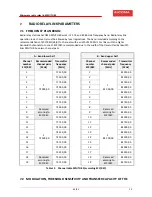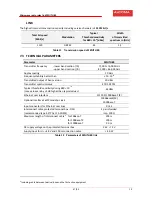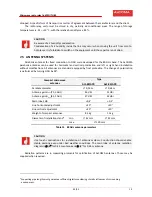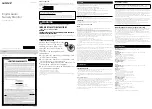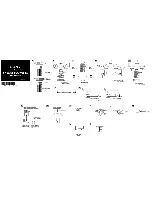
Microwave
radio
relay
link
ZENITH
80
40/52
1.2
4.2
CONTROL
CALCULATION
The
following
relationship
is
valid
for
the
calculation
of
a
level
at
the
output
of
the
receiving
antenna,
i.e.,
at
the
input
of
the
microwave
receiver:
P
in
[dBm]
=
P
vys
[dBm]
+
G
antV
[dB]
+
G
antP
[dB]
–
A
0
[dB]
where:
P
vys
[dBm]
is
the
transmitted
output
of
the
opposite
station
G
antV
[dB]
is
the
transmitting
antenna
gain
G
antV
[dB]
is
the
receiving
antenna
gain
A
0
[dB]
is
the
free
environment
attenuation
The
following
relationship
is
valid
for
the
attenuation
of
free
environment
during
good
climatic
conditions
(without
rain
and
fog):
A
0
[dB]
=
92.44
+
20
log(
d[km]
∗
f[GHz]
)
where:
d[km]
distance
between
antennas
f[GHz]
used
frequency.
The
calculated
values
P
in
can
be
compared
with
the
values
measured
by
using
the
RSSI
calibration
graph,
or
by
direct
reading
of
the
values
given
by
the
monitoring
program.
If
the
constructed
connection
has
a
partially
disturbed
first
Fresnel
zone
then
the
attenuation
due
to
the
disturbance
cannot
be
higher
than
‐
6
dB
in
comparison
with
a
free
path.
The
optical
visibility
along
the
antenna
axis
has
to
be
maintained
in
any
case.
In
the
opposite
case
retranslation
would
have
to
be
used,
and
the
critical
spot
would
have
to
be
circumvented.
The
additional
attenuation
of
the
path
given
by
the
disturbance
of
the
1st
Fresnel
zone
by
a
single
terrain
obstacle
with
a
sharp
peak
is
represented
by
the
graph
(figure
28).
The
graph
shows
the
relative
height
of
the
obstacle
z
related
to
the
ellipsoid
radius
of
the
1st
Fresnel
zone.
The
value
z
=
0
represents
the
edge
that
touches
the
optical
connection,
i.e.,
covering
of
50%
of
the
ellipsoid
of
the
1st
Fresnel
zone.


